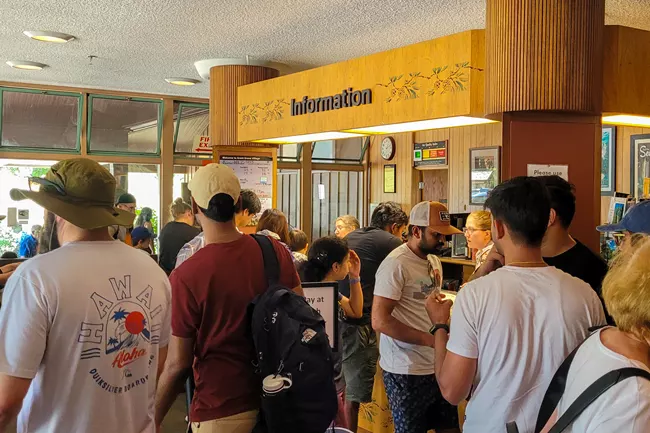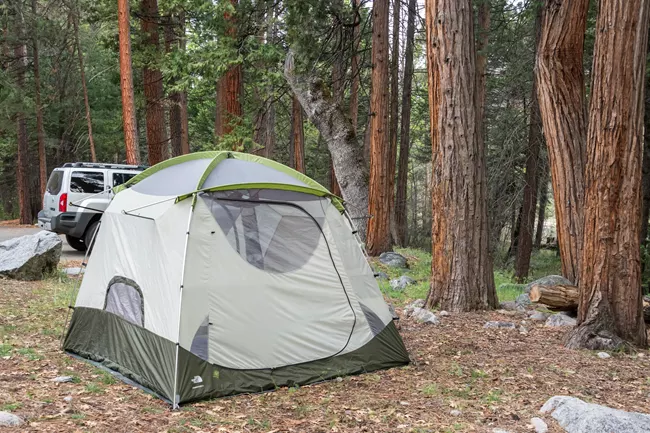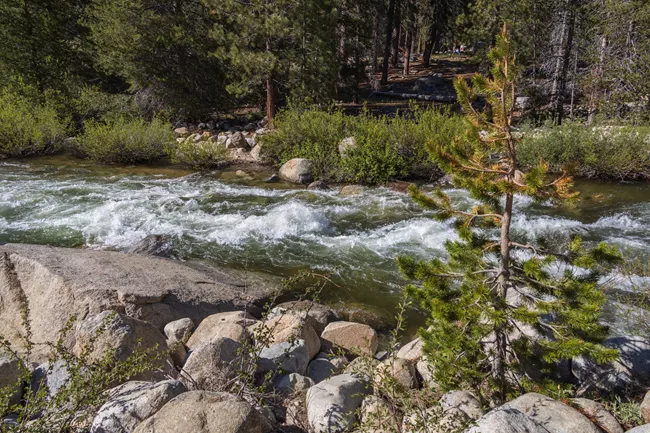In the heart of California’s southern Sierra Nevada mountains lies a world of colossal proportions, a place where trees touch the heavens and canyons plunge into the Earth’s core. This is the realm of Sequoia & Kings Canyon National Parks, a breathtaking landscape that humbles you with its sheer scale and ancient beauty. Standing at the base of a giant sequoia, you feel an immediate, profound connection to nature and time itself.
These jointly managed parks protect a vast wilderness of towering granite peaks, roaring rivers, and pristine meadows. But more than anything, they are a sanctuary for the largest living things on the planet. Whether you’re a seasoned hiker, a family on a road trip, or a soul seeking solitude, this land of giants offers an adventure that will stay with you forever. Let’s journey into this magnificent dual park and uncover the wonders within.

Two Parks, One Unforgettable Experience
Though they have separate names and entrances, Sequoia and Kings Canyon are managed as a single unit, offering a remarkably diverse experience. Think of them as siblings with distinct personalities, sharing one incredible backyard.
- Sequoia National Park, established in 1890, is the older of the two. Its celebrity feature is the giant sequoia trees. This is where you’ll find the most famous groves and the world’s largest tree, creating a forest straight out of a fairy tale.
- Kings Canyon National Park, established later, is home to the deepest canyon in the United States. Its dramatic landscape was carved by glaciers and the powerful Kings River, featuring towering granite cliffs, lush meadows, and a wild, rugged beauty that rivals Yosemite.
Your park pass grants you access to both, and the Generals Highway connects the main attractions, making it easy to explore the incredible contrasts between the forests in the sky and the canyon below.

Walking Among Giants: The Legendary Sequoia Groves
Prepare to feel small in the most awe-inspiring way possible. The main draw for millions of visitors is the chance to walk among the giant sequoias, ancient titans that can live for over 3,000 years.
The most famous area is the Giant Forest in Sequoia National Park. Here, you will find the undisputed king of the forest: the General Sherman Tree. It is not the tallest or the widest, but by total volume, it is the largest living single-stem tree on Earth. A paved trail leads you to its base, but no picture can truly capture the overwhelming presence of this 2,200-year-old behemoth.
From there, wander the Congress Trail, a gentle two-mile loop that takes you deeper into the grove, past other named giants like The President and the Senate and House groups. Further north, in the Grant Grove area of Kings Canyon, stands the General Grant Tree. This is the second-largest tree in the world and has been proclaimed the “Nation’s Christmas Tree.”

Reaching for the Sky: Iconic Vistas and Hikes
While the trees are the stars, the parks’ granite geology provides a stunning supporting cast. For some of the most spectacular views in the Sierra, a few key spots are absolute must-dos.
Moro Rock is an unforgettable experience for those unafraid of heights. This massive granite dome features a 350-step staircase carved directly into the rock. The climb is exhilarating, and your reward at the summit is a breathtaking 360-degree panorama of the Great Western Divide and the sprawling forests below.
For a more tranquil experience, head to Crescent Meadow, famously called the “gem of the Sierra” by naturalist John Muir. An easy 1.5-mile loop trail takes you around this serene, green meadow, often dotted with wildflowers in the spring and offering a peaceful contrast to the towering trees and granite that frame it.
Journey into the Depths: The Majesty of Kings Canyon
To truly appreciate the “canyon” part of the park’s name, you must drive the Kings Canyon Scenic Byway. Open typically from late spring to fall, this 50-mile road descends dramatically from the sequoia groves down into the glaciated valley. The drive itself is an adventure, with jaw-dropping views at every turn.
Once in the valley, known as Cedar Grove, the landscape is dominated by steep granite walls and the turquoise waters of the South Fork Kings River. Don’t miss these key stops:
- Roaring River Falls: A short, powerful cascade that thunders through a granite chute, just a brief walk from the road.
- Zumwalt Meadow: A stunningly beautiful 1.5-mile loop trail that showcases the classic Kings Canyon view: a lush, flat meadow floor juxtaposed against the colossal granite cliffs of Grand Sentinel and North Dome. It’s a perfect spot for a picnic and quiet contemplation.

Beyond a Day Trip: Camping and Stargazing
To truly immerse yourself in the magic of Sequoia & Kings Canyon, spend a night under the stars. The parks offer over a dozen campgrounds, ranging from the popular and centrally located Lodgepole and Dorst Creek in Sequoia to the more remote Cedar Grove and Sentinel campgrounds in Kings Canyon. Waking up to the crisp mountain air and the scent of pine and cedar is an experience like no other.
As darkness falls, the show is far from over. Due to their remote location and high elevation, the parks are a premier destination for stargazing. Far from city lights, the Milky Way paints a brilliant, dense streak across the night sky. On a clear, moonless night, the sheer number of visible stars is absolutely staggering.
Planning Your Epic Adventure: Essential Tips
A trip to this vast wilderness requires a bit of planning. Keep these essential tips in mind for a safe and memorable visit.
- Best Time to Visit: Summer (June-August) offers full access to all areas but is also the most crowded. Fall (September-October) brings cooler weather, fewer crowds, and beautiful colors. Winter and spring bring snow, closing many roads (including the Kings Canyon Scenic Byway), but opening up opportunities for snowshoeing and cross-country skiing among the sequoias.
- Entrance Fees: A fee is charged per vehicle for a seven-day pass, which is valid for both parks. The America the Beautiful annual pass is also accepted.
- No Gas in the Parks: Fill up your gas tank in a gateway town like Three Rivers or Fresno. There are no gas stations within the park boundaries.
- Wildlife is Wild: Black bears are common. Store all food and scented items properly in bear-proof lockers and never feed wildlife.
- Download Maps: Cell service is virtually non-existent in most of the parks. Download park maps and trail maps to your phone before you arrive.
- Check Conditions: Always check the official NPS website for road closures, weather conditions, and trail statuses before your visit, as conditions can change rapidly.
